Extinction Rebellion, committed to the living
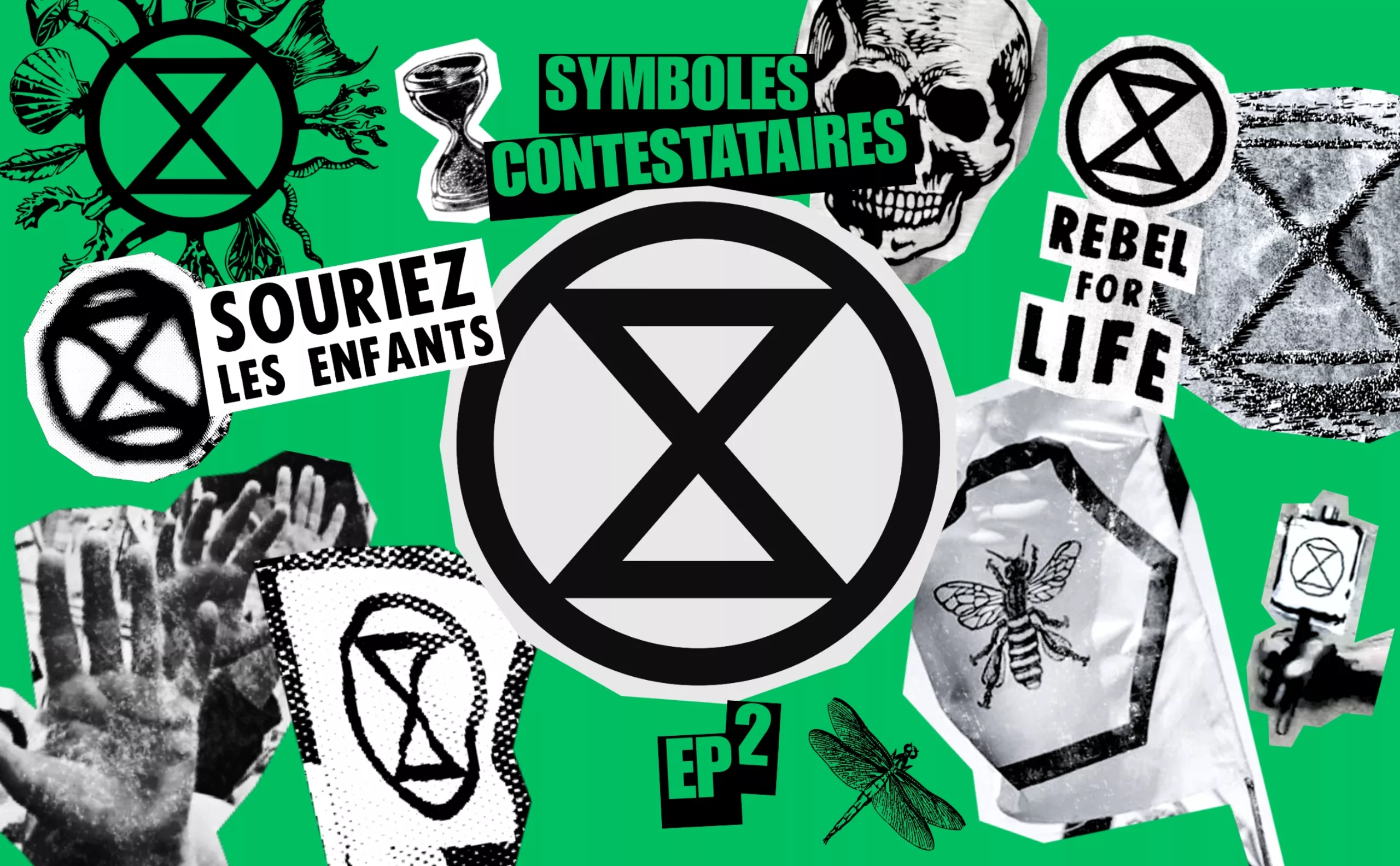
For the second time in human history, a generation is growing up with the awareness that our world could collapse. This anxiety-inducing fear is generating new signs of citizen activism. While the 1960s saw activists using the peace sign to fight against nuclear weapons and the threat of the H-bomb, our generation is deploying the symbol of Extinction Rebellion, a non-violent civil disobedience movement, as a rallying cry for life.
“When hope dies, action begins.”
The story begins in 2011, seven years before Extinction Rebellion was born. In his studio in East London, an artist known by the pseudonym ESP sought to create a symbol to rally activists to the ecological cause. Aware of the biodiversity crisis caused by the landscapes devastated by massive deforestation in Indonesia, he had been searching for years for a way to raise awareness of this urgent issue. “I gradually realized that the problem was so vast that I couldn’t act alone, and that I needed to find something that was simple and easy for everyone to reproduce. At the time, I was very interested in the history of symbols, such as cave paintings, runes, medieval alchemy, symbols of peace or anarchy, etc. I thought to myself that the environmental movement didn’t really have its own distinct symbol.”
He scribbled down some logo sketches and had a click when he drew a cross inside a circle, like an hourglass. ESP contacted around twenty environmental organizations to offer them his symbol free of charge, but only one responded, and even then, they didn’t use it. He then decided to take action by drawing it on walls throughout the streets of London. Passersby quickly understood its meaning: the cross, the hourglass, the passing of time, the urgency.
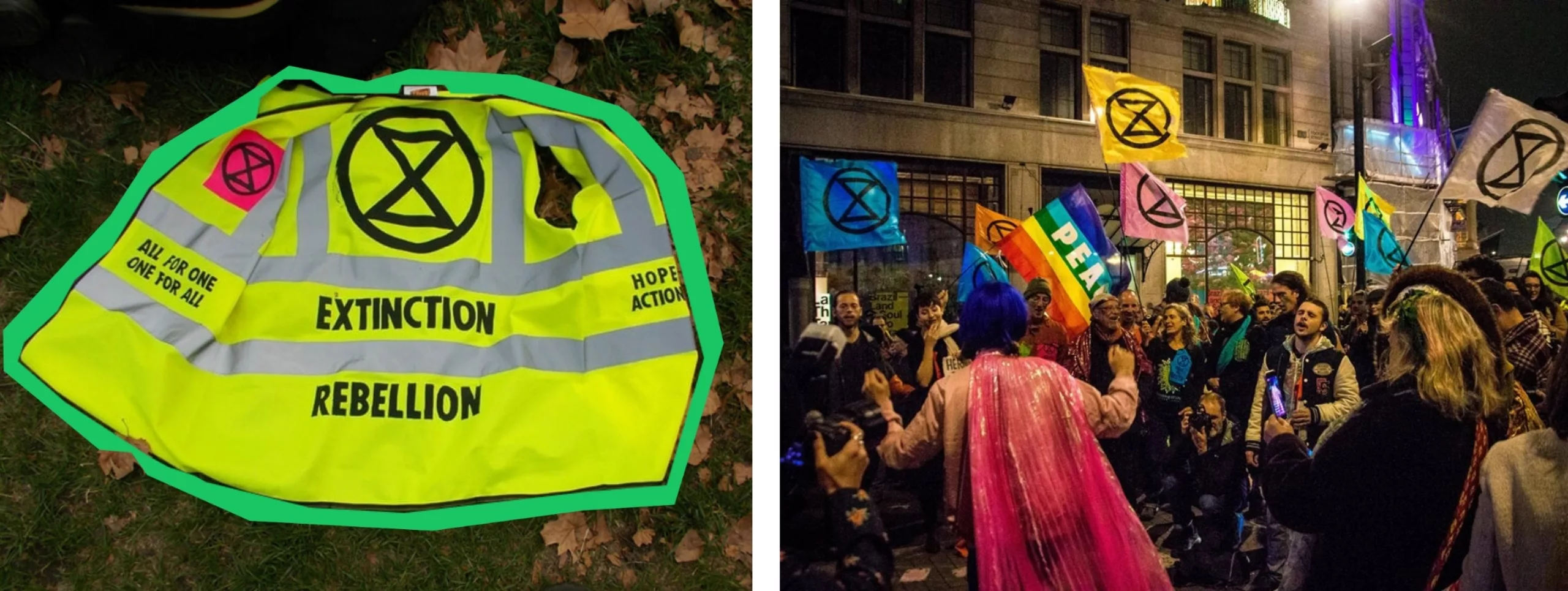
In 2018, the founders of the Rising Up! collective contacted him. The nascent movement was looking for a symbol that could “transcend linguistic differences and distill a lot of meaning into a simple form, which would then become a concentrated source of energy.” The Extinction Rebellion logo was first used in front of the Palace of Westminster in London during a protest against the extinction of life, with a thousand protesters, including Greta Thunberg.
Gail Bradbrook, a doctor of molecular biophysics and opponent of shale gas, Roger Hallam, an organic farmer and researcher on civil disobedience, and Simon Bramwell, a former construction worker turned survival course instructor, founded this activist movement with other activists. Their slogan? “When hope dies, action begins.” The citizen rebellion to defend the environment now has a name and a logo.
Shaken by the threat of climate change and the destruction of life caused by human activity, the citizen movement Extinction Rebellion advocates non-violent civil disobedience to “persuade governments to take appropriate action in the face of the climate and ecological emergency.” It draws inspiration from civil movements such as those led by Gandhi and African Americans, as well as the Occupy movement (a movement fighting against injustice and inequality). Protesters are prepared to be arrested. The movement is neither ideological nor political and is open to anyone who wants to take action.
Extinction Rebellion: an hourglass in a circle, because time is running out
While the Extinction Rebellion logo is simple, its symbolism is powerful. The circle represents the Earth, and the stylized hourglass is a “warning that time is running out for many species,” symbolizing the Holocene, the sixth mass extinction. Since the dawn of time, the circle, with its perfect closed shape with no beginning and no end, has symbolized totality, eternity, but also protection. In contemporary ecological symbolism, it naturally evokes our planet Earth, that fragile “blue marble” photographed for the first time from space in 1946.
Inside, two triangles form an hourglass, a figure of passing time, but one that can be turned upside down. This “X” can also be interpreted as a prohibition, a “stop.” The triangle, notes Adrian Frutiger, is the shape that “shows a direction” like an arrow. Here, the two opposing triangles create visual tension: one points upwards (hope, elevation), the other downwards (fall, collapse).
This formal dialectic perfectly captures the ambivalence of our climate era, between the possibility of reversal and the threat of extinction. As Oscar Fernández, professor at Columbus College of Art & Design, points out: “There is intelligence in placing this hourglass in the circular, life-giving form of the earth; as if there were a disease implanted within it.”

The original corporate identity and style guide for the Extinction Rebellion logo consists of a few lines on a minimalist website, which offers the logo in svg format and as a stencil. It has since been expanded and can be viewed on this website. It is always used on a solid colored background, most often black or green, but also pink, yellow, purple, or blue. Pastoureau explains that the West has entrusted the color green with “the impossible mission of saving the planet”…
The Extinction Rebellion logo does not tolerate any derivative products
Although the logo is freely available in the public domain, no derivative products or commercial use are tolerated, and protesters are encouraged to create their own accessories by hand. The idea is to prevent the logo from serving the capitalist society it denounces, as happened with the peace & love symbol (that you can read here) or the Anarchy symbol.
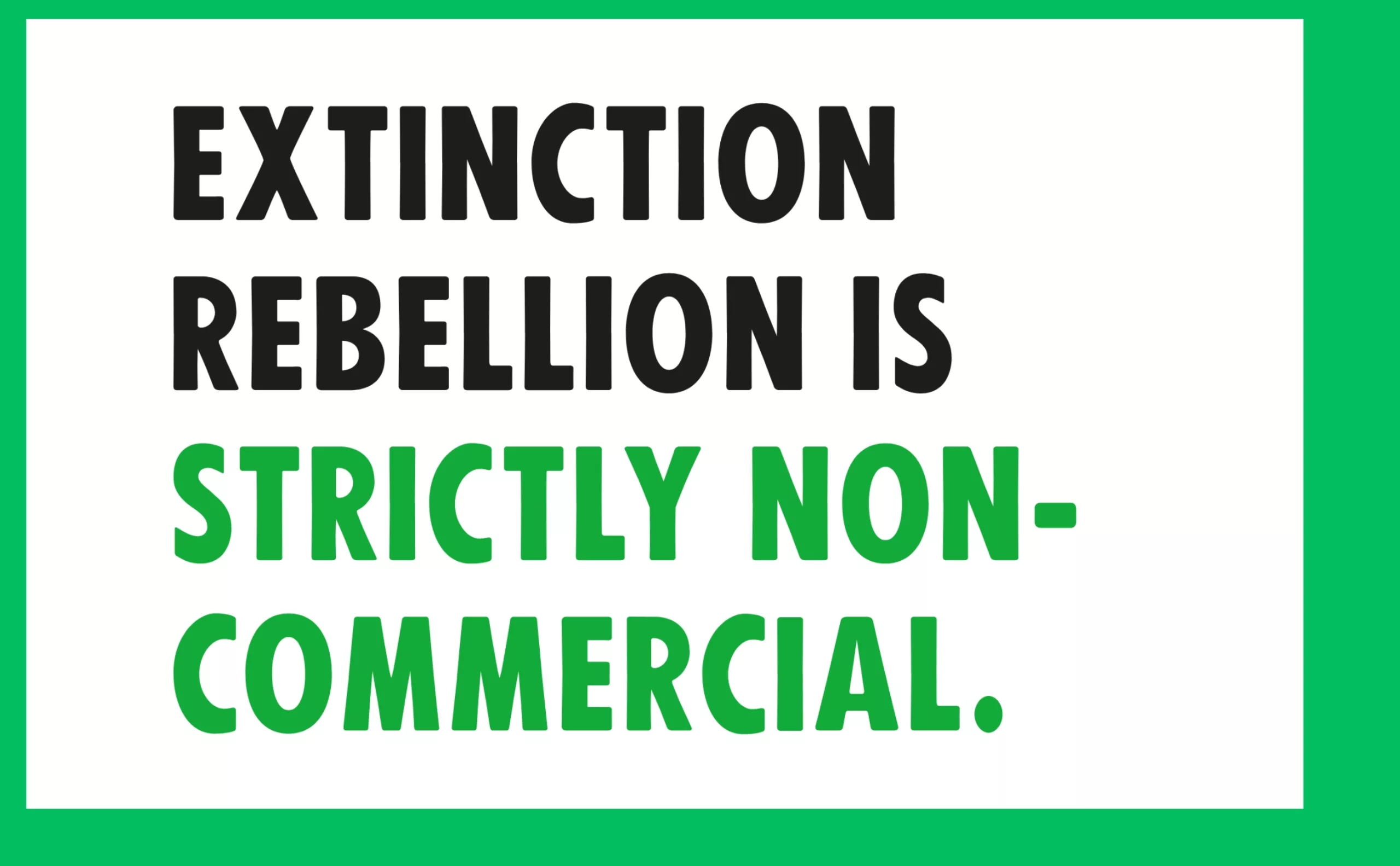
This desire is part of the legacy of the creative workshops of May 1968 (which we will discuss below), which asserted that “using [posters] for decorative purposes, displaying them in places of bourgeois culture, or considering them as objects of aesthetic interest undermines their function and effect.”
The French Extinction Rebellion website even offers a poster generator for “rebels” and provides posters that can be downloaded for free:
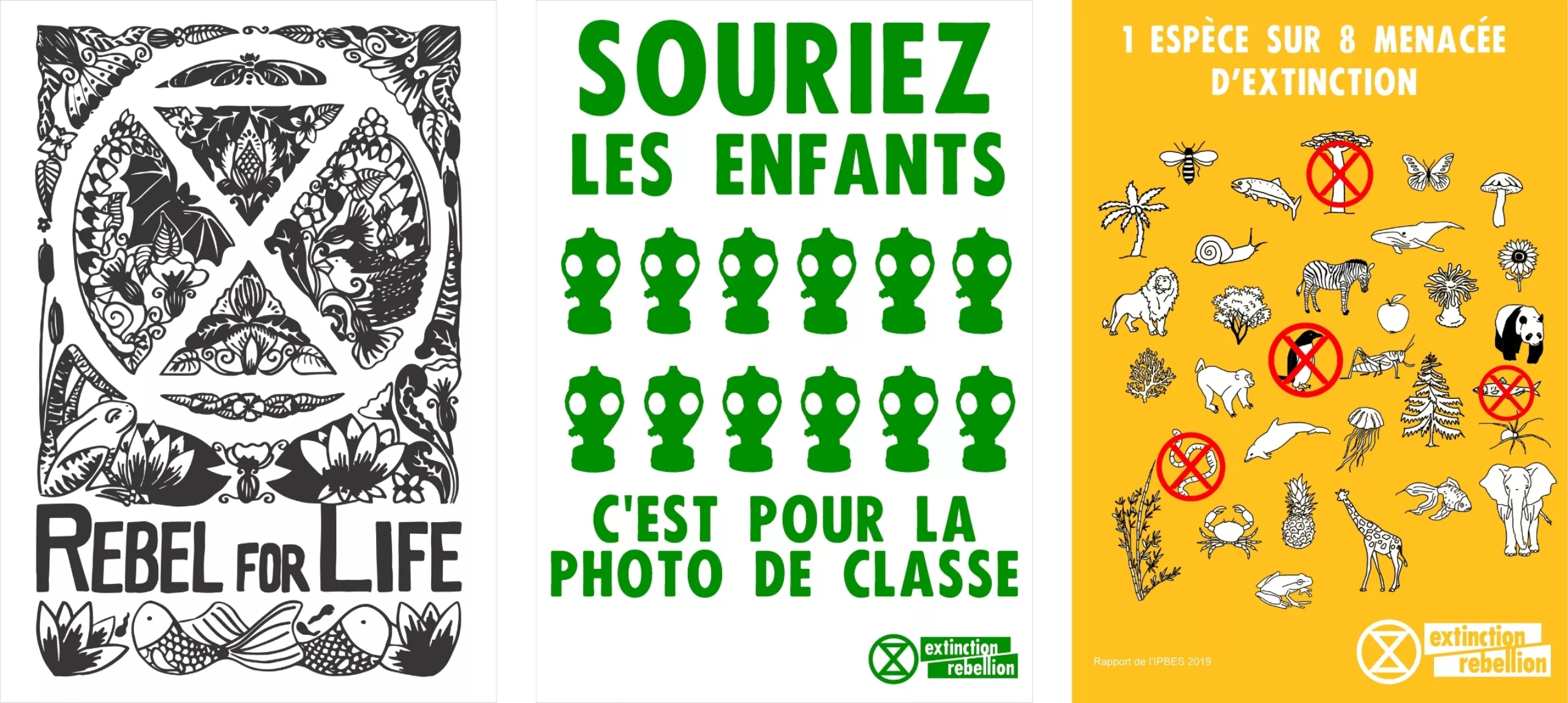
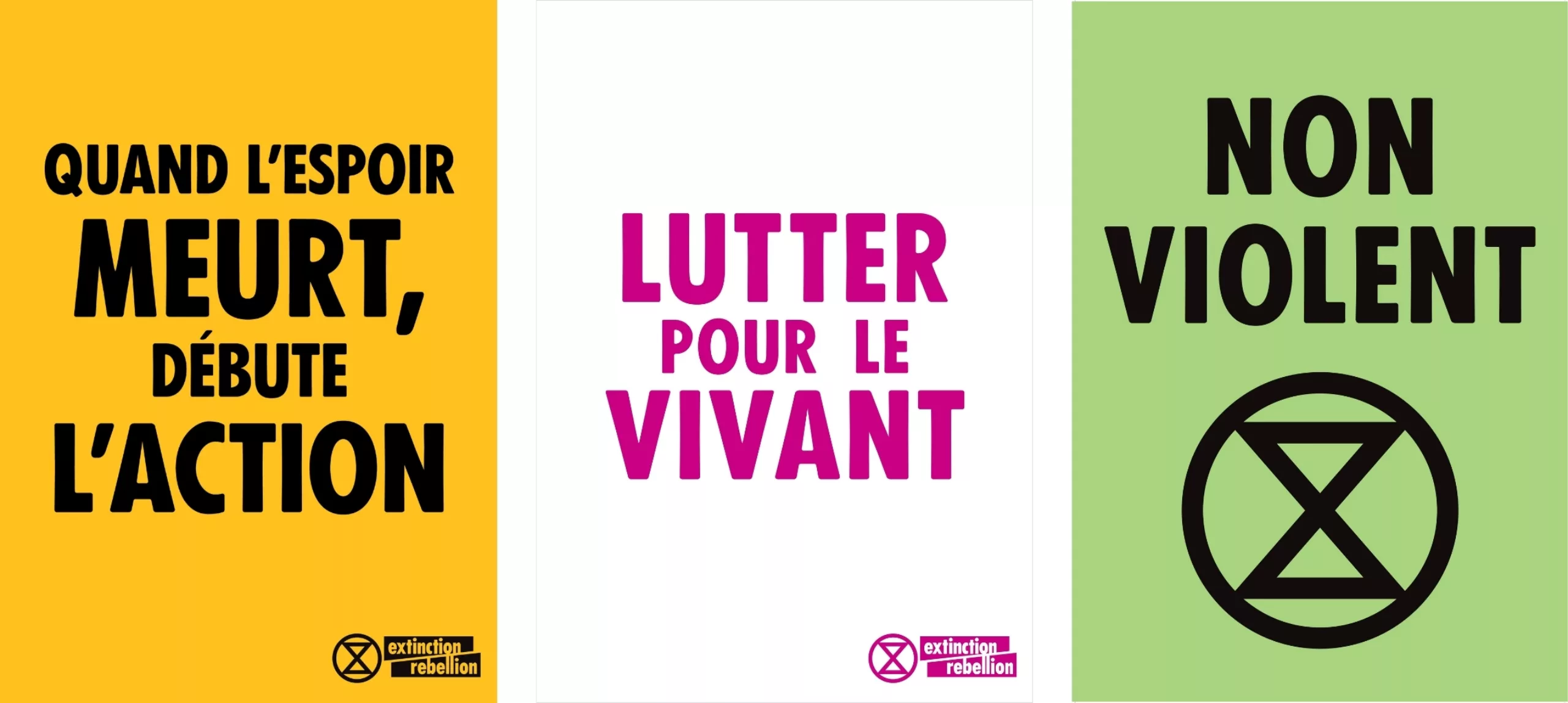
While anyone can participate in creating posters or content, since the sources are open, two graphic designers have been involved since the inception of XR: Charlie Waterhouse and Clive Russell, who adapt the identity to various visual media, including the graphic charter mentioned above. The veteran artist-activist duo is also behind the agency This Ain’t Rock and Roll, which is involved in several activist campaigns. “If we told people to go to H&M to buy an Extinction Rebellion T-shirt and join the movement, what message would we be sending them? We have to change this shit,” says Russell.

A logo to unite and fight, without flower power
“From my perspective as a designer, all the environmental movements that have emerged so far have been lame: their design was awful, they only addressed their internal audience, without looking outward,” explains Russell. “It was really important to get the message across that we are a non-violent movement, but that doesn’t mean we’re not angry—quite the contrary, we’re really, really angry,” he adds.
Previous movements followed the hippie aesthetic, but without the punch. They featured flowers, trees, bold colors, and complex, often illegible typography. XR has succeeded in uniting these people with everyone else, in being legible and sustainable over time, and in being taken seriously. Graphic designers use complementary universal symbols such as skulls, animals, and plants.
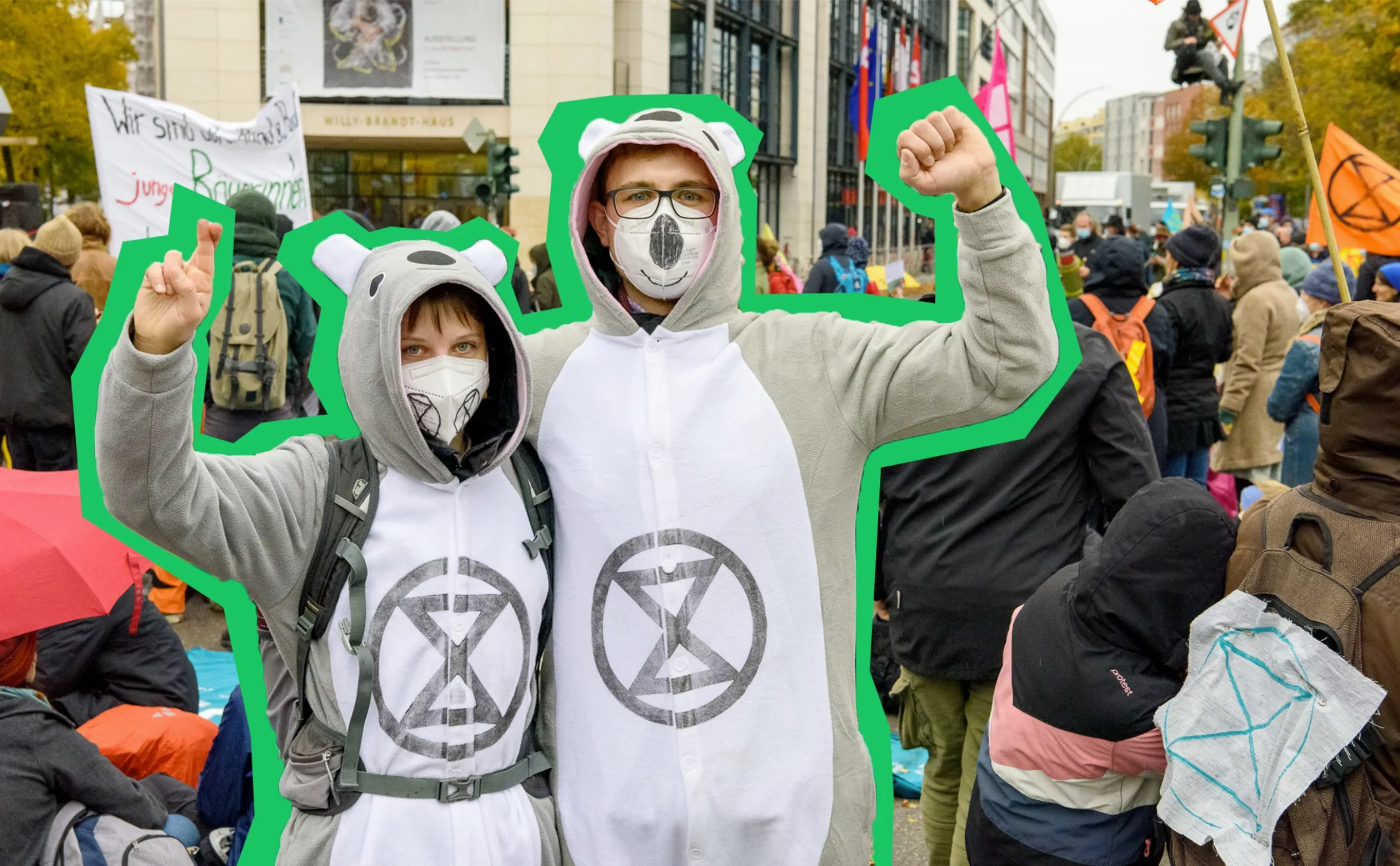
Limitations and criticism of the Extinction Rebellion symbol
Whereas the movements of the 1970s favored bucolic imagery (flowers, animals, landscapes), XR has adopted a more urban and sometimes anxiety-inducing aesthetic, with woodcut-style illustrations of skulls and skeletons of Grim Reaper. Its shock tactics and “die-ins” transform public squares into symbolic graveyards, while its collages saturate the urban visual space with reminders of death. At the same time, when it comes to denouncing the extinction of species, it’s difficult to do otherwise…
This graphic radicalization is divisive. For its supporters, it accurately reflects the climate emergency. For its detractors, it veers into paralyzing “apocalypticism.” The Extinction Rebellion logo crystallizes these tensions: some see it as a call to action, others as a defeatist prophecy.
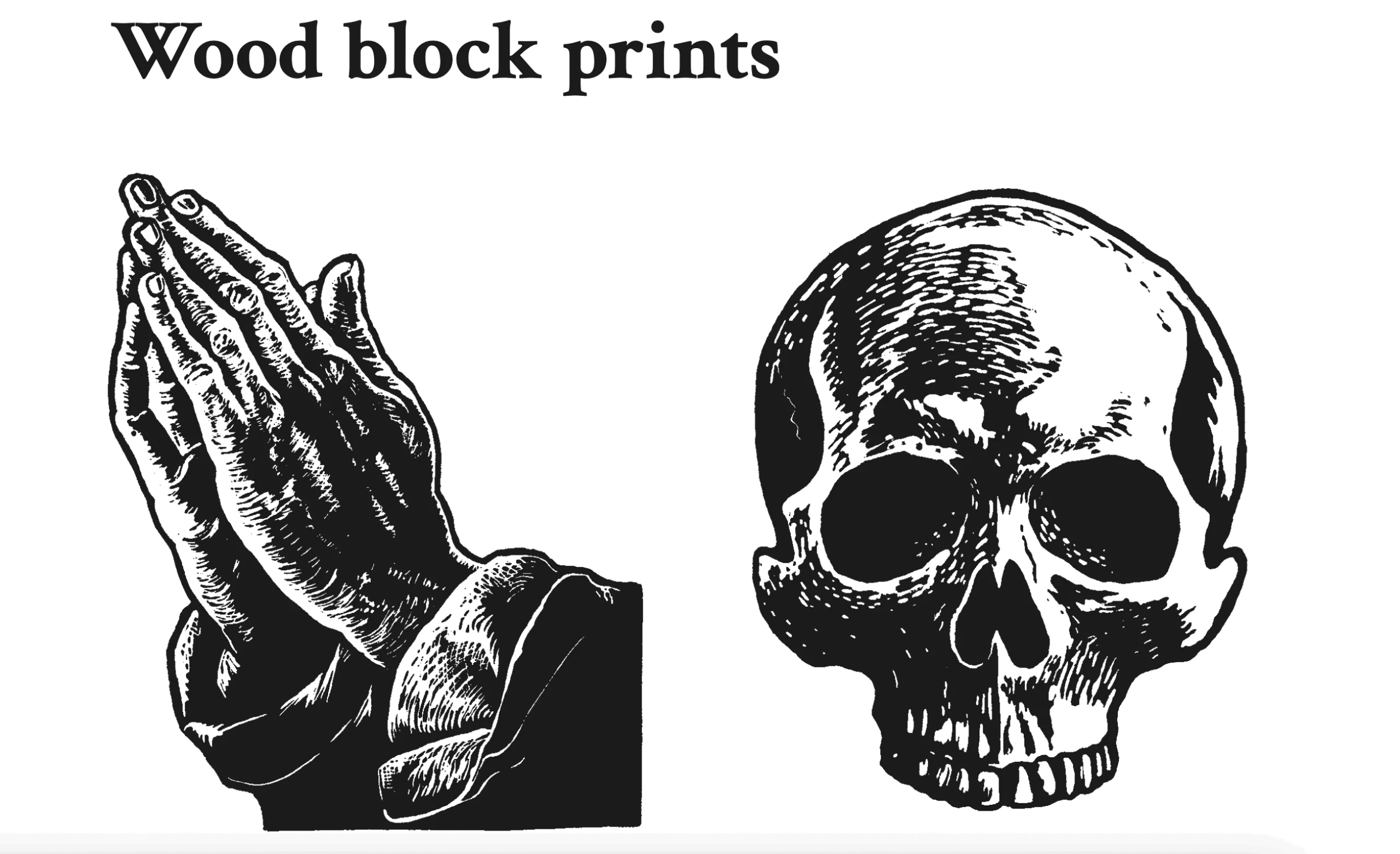

Among the criticisms levelled at the Extinction Rebellion (XR) movement, accusations of extremism and sectarianism feature prominently, coming from a variety of quarters, from politicians to experts to other activist figures. Jutta Ditfurth, co-founder of the German Green Party Die Grünen and (in theory) knowledgeable on the subject, nevertheless considers the movement to be an “esoteric sect that believes in the early extinction of humanity and advocates self-sacrifice.”
In France, the far left is seeking to infiltrate social movements such as XR in order to destabilize the government, but Extinction Rebellion refutes these links, reaffirming its exclusive commitment to non-violence as an ethic and strategy. Finally, they are criticized for being unrealistic in their demand for carbon neutrality and for ignoring social struggles. It is obviously expected that environmental movements should always be exemplary at all levels: because it is less tiring to judge others than to question oneself. Let those who have never polluted cast the first stone!
Finally, as with any logo, critical minds see references to other symbols or brands. One thinks of the Masonic hourglass, for example, symbolizing lost time and, inevitably, death, or the Nordic rune dagaz, a horizontal hourglass representing the balance of the summer solstice, awakening, and an invitation to take action. It turns out that the artist ESP claimed to have been inspired by these motifs.

Some also see it as the Lakota symbol, kapemni, used by this Native American people to signify the symmetry between the real world and the metaphysical world, between heaven and earth. Finally, others accuse it of copying the logo of the Sogo shopping center in Asia. Both symbols feature an X enclosed in a circle, but as they are not in the same field or on the same continent, it is unlikely that the shopping center influenced the activist.
The militant legacy of Extinction Rebellion
The most direct and influential ancestor of the Extinction Rebellion logo remains the Peace & Love symbol, created by Gerald Holtom in 1958 for the British Campaign for Nuclear Disarmament. Holtom was a conscientious objector seeking a universal symbol to alert people to an existential threat. The connection is striking: the same geometry of the protective circle, the same refusal to protect rights (Holtom wanted his symbol to remain “free for all” even though it was hijacked by consumer society), and the same ability to transcend cultural boundaries.
But where the peace symbol reflected the nuclear anxiety of the 1960s and 1970s, the ESP hourglass expresses the climate emergency of the 2010s and 2020s. So much so that The Guardian described it as “this generation’s peace sign,” highlighting its ability to galvanize concern about the climate emergency through its striking design and to lead non-violent pro-environmental activism.
This continuity also reveals a constant in militant symbolism: major protest signs always arise in contexts of threat. We discussed this in our article on the branding of social movements: “these graphic marks act in a revolutionary way, in the sense that they impose themselves suddenly and collectively, shaking up our perceptions and our consciences,” whether it be the yellow vests, anti-femicide collages, or Anonymous. The only difference with these movements is that these symbols were all born out of urgency, sometimes despite themselves, whereas XR’s symbol was sought after as part of a brand strategy.
The Extinction Rebellion graphic design team also claims to be the heir to the Atelier Populaire of May 1968, which produced its screen-printed posters in haste during the revolutionary emergency. However, the members of the Atelier created everything from scratch in a closed graphic environment and did not allow outsiders to appropriate their codes or create their own. The two XR graphic designers also say they are inspired by the pop colors of Eduardo Paolozzi. Paolozzi and the Atelier Populaire both rejected the dominant approaches of their time and sought something that would instill a rebellious spirit in people… [they] also thumbed their noses at the social order in a way.
Since 2018, the hourglass in the circle has in turn inspired other artists, leaving a lasting legacy. Banksy incorporated it into a mural with the following message: “From this moment on, despair ends and tactics begin.”

In 2019, artist Joanie Lemercier even dedicated a specific project, “Projection Rebellion,” to this cause, projecting the logo onto important monuments, reminiscent of Batman’s call to Gotham City.

The Victoria & Albert Museum in London has acquired it for its permanent collection, enshrining this symbol in the country’s history and recognizing its aesthetic role in alerting and uniting people. Russel calls on “all artists and designers to overcome the oppressive constraints of tedious commercial work and join us in our rebellion.”
Now it’s your turn.


